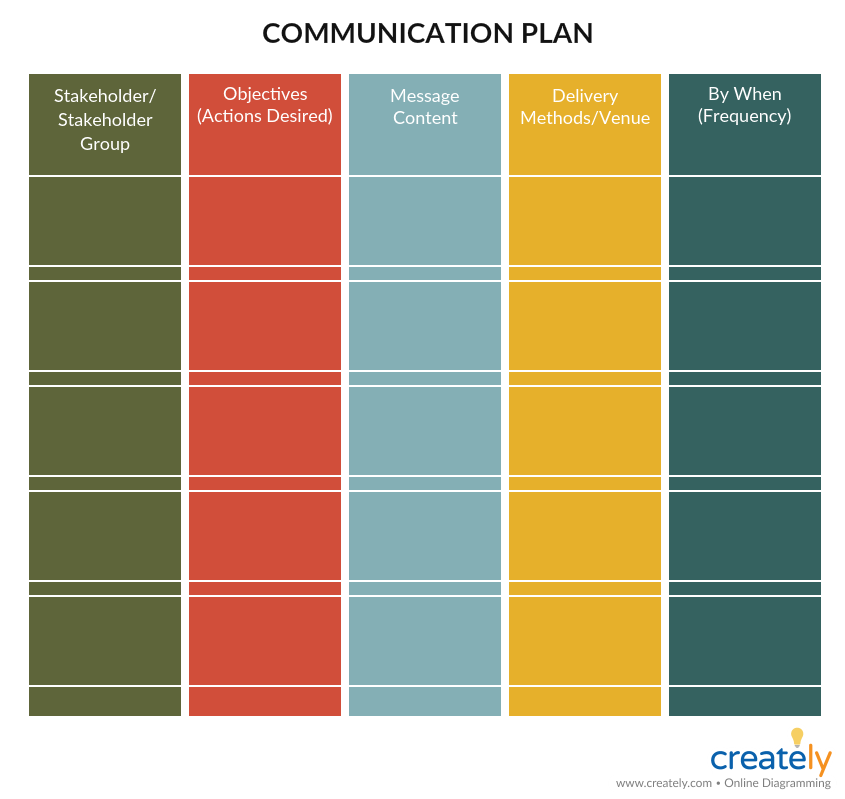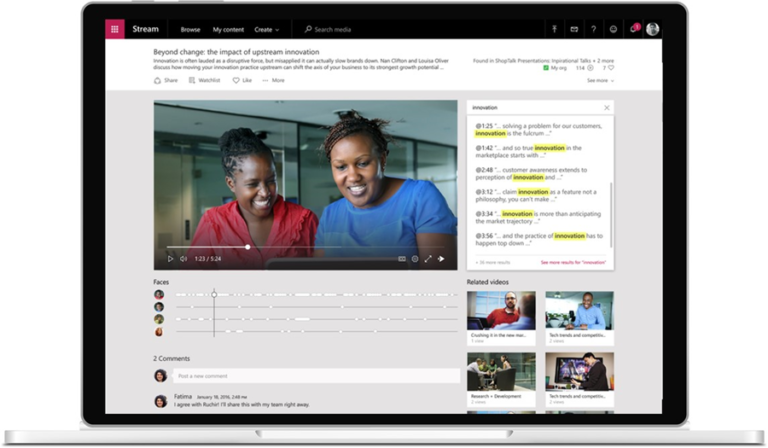Few things can succeed without the guidance of a plan. Sure, you can get lucky here and there by just “winging things.” But if you really want to increase your chances of success at any endeavour – not just an internal comms plan – you need to come up with a solid plan. This is a truth that is just as applicable to your internal communications as it is to any other aspect of your business. If you don’t have an internal communication plan yet, you’re missing out on great opportunities to leverage the advantages it brings.
The Current State of Internal Communication Planning
If you’re without one, you’re not really alone in lacking an internal communication plan. The most recent State of the Sector report pushed out by Gatehouse has found that only 50% of businesses had a clear internal communication plan to begin with. Even fewer had an overarching strategy to guide their internal communications efforts. This goes to show that many companies are simply reactive or opportunistic when it comes to internal communications.
On the surface, there’s really nothing wrong with that. After all, internal communications seem to serve their function best when they are fluid with what is going on within a company at any given time. For example, most businesses go in to reaction mode and are quick to push out reassurances from top management when a something impacts the overall organisation structure. This is an effective way to ensure that employees are kept abreast of current developments and reassured with the direction of the business.
The problem with this reactive mentality is that it doesn’t take into consideration the usefulness of internal communications in many other aspects. It’s more than a tool for broadcasting corporate announcements and ‘fire-fighting’. It can also be used to continuously align employees with your overall corporate strategy. It can help promote better visibility of leadership, actively drive support for initiatives, and can improve the discourse between employee and employer. For all of those needs, however, you need a good internal communication plan.
The Necessity of Planning
Business planning is a mixed bag for many companies. Many, for example, argue that it’s better to do things rather than sit down and talk about it. While there is some weight to be had in the idea of action over planning, it all boils down to a simple, fundamental misunderstanding. Many assume that a plan needs to be overly long and fleshed out to be viable. In actuality, a simple framework is a good enough place to start.
You see, the value of any business plan is in its ability to clarify your goals, guide actions towards them, and address any issues that may crop up. An internal communication plan is no different. These don’t have to be comprehensive from the outset. After all, the best plans are constantly evolving in the face of newly discovered challenges and opportunities. What they should be at the start are solid and measurable guides for action.
Strategy Versus Plan: Which One Do You Go For?
The answer here is both. Your strategy is the grand view of things and tackles questions of why. Well-established and long-standing businesses already have this set up. Your company’s values, its unique selling proposition, and its overall character are the heart of the strategy that should guide your internal communication plan. Anything that you formulate in this regard should always be in alignment with your strategy.
For example, if your company strives to build itself as an environmentally-friendly venture, your internal communications can and should be supportive of this. Communications will likely include pushing to reduce carbon initiatives, the removal of plastics from day to day use, and highlighting the participation i Earth Day initiatives. Strategy flows into plan flows into action here, and should be the consistent order that is followed.
Numbers Support Planning
A look at recent surveys fully supports the idea of having an internal communication plan as opposed to being merely reactive and communicating on the fly. A Gallup survey, for example, found that businesses that engage their employees via effective internal communications saw a boost of up to 20% in productivity. On the financial side of things, a 16% increase in profit margin was seen in employees that experienced high engagement again via internal communications. That was in a case study from Standard Chartered Bank. These case studies definitely speak to how creating a sound plan is definitely the way to go.
The Key Elements of a Successful Internal Communication Plan
Now, when talking about planning, you quickly get down to specifics. A good plan effectively answers questions of who, what, when, where, and how. A great plan does all of that while being consistent with several key elements. Here are those elements that you should always take into consideration when assembling an internal communications plan:
Proper Situational Awareness
In order to build an internal communication plan for the future, you need to be fully aware of where you are at the moment. Understanding the strengths and weaknesses of your existing setup allows you to make key adjustments moving forward. Begin by asking yourself what the overall purpose of internal communications has been. Is it to announce important events in your company? Is it to promote corporate initiatives? List all these down and make sure that you cover everything. Bear in mind that – depending on the size of your company – you may be looking at communications for a specific project or business area, or the entire company.
The next thing you need to look at is how effective you have been thus far. Have many people received previous communications? Did you see the change in behaviour and actions that you were going for? When you have the answers to that, take a step back and list down the different channels that you used for each specific piece of communication. This will be invaluable down the line when you work channel options into your internal communication plan.
There are several ways you can gather the data you need. One is to conduct surveys. By going straight to employees, you can learn not only whether or not you’ve gotten your message across, as well as which means of delivery were most effective. Ideally, you should have a central means of gathering data and statistics on your internal communications like channel and audience splits. Something like ICPlan with its built-in analytics suite will help provide the quantitative data to support the qualitative data you gather through surveys.
Clear Goals and Objectives
The next element of a great internal communication plan is a clear set of goals and objectives that you are aiming to achieve with it. You should start with more general objectives. The most common of these include alignment of employees with your corporate strategy, support for your initiatives, improved discourse and efficiency, leader visibility, and more. You should then break each down into more focused specifics. For instance, “improving efficiency” can be broken down into “increasing sales numbers by 20%”, or “lowering staff turnover rates by 10%.”
Confident Direction and Procedures
At the heart of every great internal communication plan is a clear set of directions and procedures that will guide its execution. The best way to go is to have a step-by-step listing of what activities are necessary to achieve the goals you’ve stated. It all begins with the message. You want to make sure that the message is always clear, concise, and carries a clear call to action. You can opt to be specific and write down what you want to say, or you can just present clear guidelines for your communicators to follow.
Included in the element are the various channels that you will use to carry out the task. Here’s where the data you’ve gathered from employees comes in. A great internal communication plan is adaptive to what works. If audiences aren’t opening their emails, you shouldn’t push its use—at least not in isolation. You’re always free to have channels support one another. For instance, you could send a longer policy document via email then send out a message via Workplace by Facebook or Yammer mentioning it with a link for people to read it.
Measurability
Finally, a great internal communication plan has clear measures of success. This starts with the tools. As mentioned earlier, employee surveys are a great way to go to get qualitative data, but this needs quantitative support. The good news is that most channels have analytics baked in to help give you numbers for opens, reads, and even engagement. The key here is to clarify in your plan who is gathering this data as well as the timeline in which data should be collected.
A key component to this element is also the tool you use to aggregate all the data you collect. It’s tempting for many companies to utilize something like Microsoft Excel. There are certainly advantages to this. For one, many are at least passingly familiar with it. For another, it does allow for the use of formulas for tracking. That said, it is a very inflexible platform—requiring in-depth knowledge to manage successfully. Remember, it isn’t purpose-built for the task of managing internal communications.
It is worth mentioning here that there are some enterprise solutions that make all of this wholly simpler by unifying everything under one platform. Purpose-built, all-in-one options like ICPlan allow you to have all the measurable statistics that you need in one place. It’s certainly worth the investment because it saves you both time and effort getting data that you need. This is one of the more important elements to consider because they aid the refinement and robustness of your internal communication plan.
Case Studies
Siemens – Internal Communications Done Right
From the offset, it’s clear that Siemens had the right idea in its internal communication plan. As their head of International Communications, Shelly Brown, put it, their goal was “to foster engagement while helping employees understand the company’s business objectives and how they fit into them.” They achieved this by having a very human approach. Their communications didn’t straight out reiterate their strategy, but rather resonated with it across many levels.
One of the keys to their success was the effective use of multiple channels. They leveraged internal social media and essentially went to meet their employees at their level—paving the way for meaningful interaction. They also made use of videos and blogs to better communicate their ideals to their people. This was all supplemented with the use of traditional print media via their monthly global newsletter.
The other key to their success was in fully integrating their values into their internal communication plan. With accessibility as their starting point, they took into consideration where their employees were at. Communications to factory workers who didn’t have access to online channels were heavily focussed on print. They even strongly leaned on employee engagement via participation in community activities. All in all, what they managed to create and execute on was a proactive and very dynamic internal communication plan that worked.
British Airways – Rising From The Ashes
In the early 2010s, British Airways was the poster child of communications gone awry. Along with the weight of the global recession, they were also wrestling with cabin-crew strikes. Morale was at an all-time low and it was clear that internal communications had broken down terribly. They went back to the drawing board and came up with a cohesive and working internal communication plan—a tall order if there ever was one.
Facing an already hostile us-versus-them situation, further challenges to this effort lay in the fact that you’re talking about a highly disparate and scattered workforce. The response was to refocus on what was at the centre of the brand. The sponsorship of the Olympics was an excellent starting point. The internal communication campaign sought to ignite pride in the company as being at the forefront of welcoming the outside world into the country—as well as the specific roles each employee played in that, and they went from there.
Royal Mail – Meeting Their Employees Where They Are
Finally, the Royal Mail Group bears looking at as the perfect example of effective channel selection. With many of the 150,000-strong workforce regularly on the move around the country, it was clear that communication was going to be tough. Face-to-face communications are hard to implement, while email is often a non-starter with so many deskless employees. So they leveraged their printed newsletter the Courier.
It made perfect sense. It required no power to read, it could be taken everywhere, and it was easy to pick up and read. They completely overhauled the Courier to have it tabloid-like with catchy headlines, punchy images, and quick, concise reads. This gave their people the facts in little bites that could be consumed at down times. Better still, they supported this printed newsletter with a digital copy so as to allow more ways for employees to access their communications. An internal communications plan that meshed both traditional and modern channels.
Bring It All Together
A successful internal communication plan is an effective expression of your company’s values and overall strategy whether it’s for the entire company or simply a part. It contains the elements of a solid understanding of the situation, a clearly defined set of actionable goals, a set means of delivery, and measurability. When you make time to set it up, making sure you’re informed by employee data, it can become an effective tool in your arsenal.
















